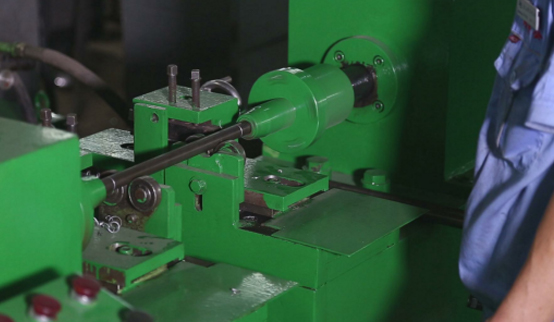 Afrikaans
Afrikaans  Albanian
Albanian  Amharic
Amharic  Arabic
Arabic  Armenian
Armenian  Azerbaijani
Azerbaijani  Basque
Basque  Belarusian
Belarusian  Bengali
Bengali  Bosnian
Bosnian  Bulgarian
Bulgarian  Catalan
Catalan  Cebuano
Cebuano  Corsican
Corsican  Croatian
Croatian  Czech
Czech  Danish
Danish  Dutch
Dutch  English
English  Esperanto
Esperanto  Estonian
Estonian  Finnish
Finnish  French
French  Frisian
Frisian  Galician
Galician  Georgian
Georgian  German
German  Greek
Greek  Gujarati
Gujarati  Haitian Creole
Haitian Creole  hausa
hausa  hawaiian
hawaiian  Hebrew
Hebrew  Hindi
Hindi  Miao
Miao  Hungarian
Hungarian  Icelandic
Icelandic  igbo
igbo  Indonesian
Indonesian  irish
irish  Italian
Italian  Japanese
Japanese  Javanese
Javanese  Kannada
Kannada  kazakh
kazakh  Khmer
Khmer  Rwandese
Rwandese  Korean
Korean  Kurdish
Kurdish  Kyrgyz
Kyrgyz  Lao
Lao  Latin
Latin  Latvian
Latvian  Lithuanian
Lithuanian  Luxembourgish
Luxembourgish  Macedonian
Macedonian  Malgashi
Malgashi  Malay
Malay  Malayalam
Malayalam  Maltese
Maltese  Maori
Maori  Marathi
Marathi  Mongolian
Mongolian  Myanmar
Myanmar  Nepali
Nepali  Norwegian
Norwegian  Norwegian
Norwegian  Occitan
Occitan  Pashto
Pashto  Persian
Persian  Polish
Polish  Portuguese
Portuguese  Punjabi
Punjabi  Romanian
Romanian  Russian
Russian  Samoan
Samoan  Scottish Gaelic
Scottish Gaelic  Serbian
Serbian  Sesotho
Sesotho  Shona
Shona  Sindhi
Sindhi  Sinhala
Sinhala  Slovak
Slovak  Slovenian
Slovenian  Somali
Somali  Spanish
Spanish  Sundanese
Sundanese  Swahili
Swahili  Swedish
Swedish  Tagalog
Tagalog  Tajik
Tajik  Tamil
Tamil  Tatar
Tatar  Telugu
Telugu  Thai
Thai  Turkish
Turkish  Turkmen
Turkmen  Ukrainian
Ukrainian  Urdu
Urdu  Uighur
Uighur  Uzbek
Uzbek  Vietnamese
Vietnamese  Welsh
Welsh  Bantu
Bantu  Yiddish
Yiddish  Yoruba
Yoruba  Zulu
Zulu Understanding the Benefits of Using Concave Guide Rollers in Material Handling Systems
Understanding Concave Guide Rollers A Comprehensive Overview
In the world of mechanical engineering and industrial applications, the design and functionality of various components play a crucial role in enhancing efficiency and performance. One such component that has gained prominence in various sectors is the concave guide roller. This article delves into the design, functionality, applications, and advantages of concave guide rollers, shedding light on why they are essential in modern machinery.
What is a Concave Guide Roller?
A concave guide roller is a cylindrical component with a curved or concave surface designed to support and guide moving materials or equipment along a specific path. The curvature of the roller allows for seamless movement, minimizing friction and wear on both the roller and the materials being handled. These rollers are commonly made of durable materials such as steel, rubber, or plastic, depending on the application requirements.
Design Features
The design of concave guide rollers is characterized by their unique shape, which resembles a hollowed-out cylinder. This curvature serves several purposes 1. Enhanced Stability The concave shape allows for better stability of the materials being guided, reducing the chances of misalignment or deviation. 2. Reduced Friction The smooth, curved surface minimizes contact points with the material, leading to reduced friction and wear. 3. Easy Integration Concave guide rollers can be easily integrated into various conveyor systems, machinery, and equipment, making them versatile solutions across different industries.
Applications
concave guide roller

Concave guide rollers find applications in a range of industries, including
1. Manufacturing These rollers are commonly used in assembly lines and conveyor systems to guide products smoothly from one station to another. 2. Textile Industry In textile manufacturing, concave rollers help in guiding fabrics through different processing stages, ensuring even tension and preventing tearing. 3. Mining and Materials Handling Concave guide rollers are crucial in conveyor systems that handle heavy materials, as they help maintain alignment and reduce wear on the conveyor belts. 4. Packaging In packaging machinery, these rollers assist in guiding products through filling, sealing, and labeling processes with precision.
Advantages of Concave Guide Rollers
The adoption of concave guide rollers in industrial applications comes with several advantages
1. Increased Efficiency By providing a smooth and stable path for materials, these rollers enhance the overall efficiency of the production process. 2. Lower Maintenance Costs With reduced friction and wear, the need for frequent maintenance and replacement of rollers is minimized, translating to cost savings for businesses. 3. Improved Product Quality The stability offered by concave guide rollers helps ensure that products are handled with care, reducing the likelihood of damage during transit. 4. Versatility Their adaptability allows them to be used across various sectors, from heavy industries to delicate tasks in textile production.
Conclusion
Concave guide rollers are integral components in modern manufacturing and materials handling processes. Their unique design and functionality contribute significantly to improving efficiency, reducing maintenance costs, and enhancing product quality. As industries continue to evolve and seek ways to optimize their operations, the relevance of concave guide rollers will undoubtedly stand the test of time. Investing in high-quality concave guide rollers can yield substantial long-term benefits, making them a wise choice for any business looking to enhance its operational capabilities. Understanding their features, applications, and advantages is key to leveraging their full potential in various industrial settings.
-
Revolutionizing Conveyor Reliability with Advanced Rubber Lagging PulleysNewsJul.22,2025
-
Powering Precision and Durability with Expert Manufacturers of Conveyor ComponentsNewsJul.22,2025
-
Optimizing Conveyor Systems with Advanced Conveyor AccessoriesNewsJul.22,2025
-
Maximize Conveyor Efficiency with Quality Conveyor Idler PulleysNewsJul.22,2025
-
Future-Proof Your Conveyor System with High-Performance Polyurethane RollerNewsJul.22,2025
-
Driving Efficiency Forward with Quality Idlers and RollersNewsJul.22,2025





























